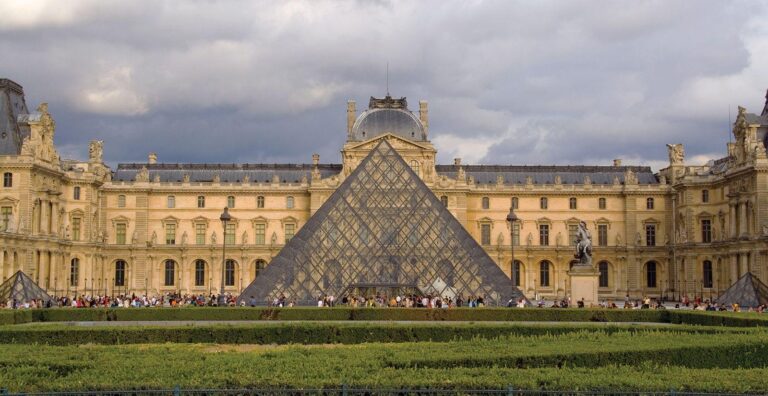French authorities, including officials at the Louvre Museum, have denied allegations of security shortcomings following a recent high-profile heist. The incident, which has drawn widespread attention, prompted scrutiny over the museum’s protection measures. In statements to the press, both the government and Louvre representatives emphasized their commitment to safeguarding invaluable cultural treasures, dismissing claims that lapses in security contributed to the theft. This controversy underscores ongoing challenges faced by major institutions in balancing public access with the need for stringent security protocols.
Louvre and French Authorities Respond to Heist Allegations with Security Assurance
The Louvre Museum and French government officials have firmly rejected accusations of inadequate security following the recent high-profile heist. Authorities emphasized that the museum’s surveillance systems and emergency protocols are among the most advanced globally, continuously updated to prevent such incidents. A spokesperson highlighted that the institution had already implemented enhanced measures, including increased personnel patrols and upgraded alarm systems, long before the incident occurred.
To reassure the public, the Ministry of Culture released detailed information on current safeguards:
- 24/7 CCTV monitoring covering every public and restricted area
- Rapid-response security teams trained for immediate intervention
- Regular security audits conducted in collaboration with international experts
| Security Aspect | Current Status | Upcoming Improvements |
|---|---|---|
| Surveillance | Comprehensive CCTV network | Integration of AI-based anomaly detection |
| Personnel | Round-the-clock security staff | Additional crisis management training |
| Alarms | Multi-layered alarm systems | Upgrade to faster alert dispatch systems |
Analysis of Existing Security Measures at the Louvre in the Wake of the Theft
In response to the recent high-profile theft, officials at the Louvre have emphatically defended the robustness of their security infrastructure. According to government sources and museum authorities, a multi-layered security system designed to deter and rapidly respond to threats was fully operational at the time of the incident. This system incorporates advanced surveillance technology, including over 1,200 CCTV cameras strategically positioned throughout the complex, alongside motion sensors and infrared alarms tailored to detect unauthorized movement in sensitive areas.
- 24/7 monitoring by trained security personnel within a centralized control room
- Regular security drills and vulnerability assessments conducted to ensure preparedness
- Implementation of biometric access controls for restricted exhibit zones
However, internal reviews point to potential human factors contributing to the breach. The coordination between on-site guards and external law enforcement is under scrutiny, highlighting a need to streamline communication protocols during emergencies. The following table summarizes critical components of the Louvre’s security apparatus and recent operational evaluations:
| Security Component | Status Pre-Theft | Recent Evaluation |
|---|---|---|
| CCTV Surveillance | Fully functional | Operational, no malfunctions detected |
| Access Control Systems | Biometric and keycard based | Effective, slight delays in recognition noted |
| Guard Patrols | Regular rotations | Identified gaps during night shifts |
| Emergency Response | Established protocols | Communication delays observed |
Experts Recommend Strengthened Surveillance and Preventative Protocols for Cultural Institutions
In the wake of the recent heist at the Louvre, security experts have emphasized the urgent need for enhanced monitoring and preventive measures within France’s prominent cultural institutions. Despite official government and museum reassurances denying any lapses, specialists argue that current protocols require immediate reevaluation to address evolving threats more effectively. They highlight that proactive surveillance technologies combined with strategic personnel training could serve as critical deterrents against future incidents.
Key recommendations include:
- Implementation of advanced AI-driven surveillance systems for real-time anomaly detection.
- Regular security audits coordinated with local law enforcement agencies.
- Comprehensive staff training on emergency response and threat identification.
- Installation of reinforced physical barriers at vulnerable access points.
| Security Aspect | Current Status | Recommended Upgrade |
|---|---|---|
| Surveillance Technology | Standard CCTV coverage | AI-enhanced motion detection |
| Staff Training | Basic emergency protocols | Advanced threat response drills |
| Access Control | Manual checkpoints | Biometric verification systems |
To Wrap It Up
As investigations continue into the recent heist at the Louvre, both the museum authorities and French government maintain their stance that security measures were adequate and that no significant lapses occurred. The incident has nevertheless sparked widespread public debate about the effectiveness of safeguarding national cultural treasures. Authorities have pledged increased vigilance and a thorough review of protocols to prevent future breaches, underscoring the delicate balance between public access and the protection of invaluable heritage.




